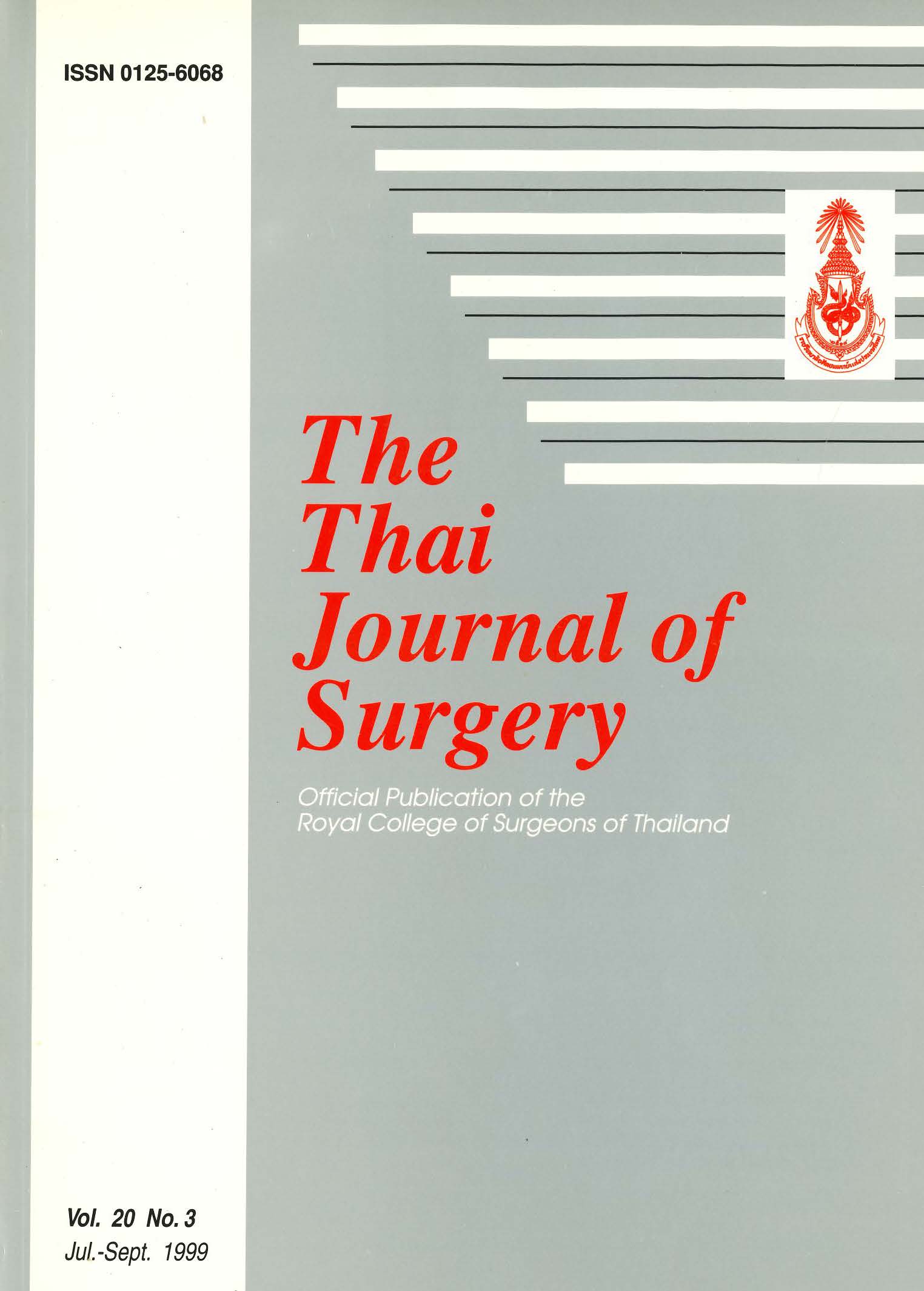Lymphatic Mapping with Isosulfan Blue and Sentinel Lymph Node Biopsy for Breast Cancer Patients
Abstract
Background: Lymphatic mapping and sentinel Iymph node biopsy has been studied worldwide to establish its role in staging for breast cancer patients. Theoretically, axillary dissection could be omitted if the first tumor draining node (sentinel node) contained no cancer. We studied the technical feasibility of lymphatic mapping with isosulfan blud and sentinel lymph node biopsy in breast cancer patients.
Patients and Methods: After informed consent, patients who had axillary dissection as a part of their treatment during December 1998-May 1999 were included. Isosulfan blue dye, amount of 3-5 ml, was injected into breast tissue around the palpable breast mass or around the biopsied cavity. The axilla was explored to identify a blue staining lymph node (sentinel node). Then the sentinel lymph node was biopsied and complete axillary dissection was performed for pathological comparison.
Results: Of 15 patients, 12 patients had mofified radical mastectomy and 3 patients had partial mastectomy + axillary dissection as their treatment. The sentinel Iymph node was able to identify in 13 patients (87%). Sentinel lymph node can accurately diagnose axillary metastasis when compared to the axillary dissection in 12 out of 13 patients (92%), with 7 true negative, 5 true positive and 1 false negative.
Conclusion: The technique of lymphatic mapping using isosulfan blue dye and sentinel Iymph node biopsy is feasible and reproducible for breast cancer patients in Thailand. Further studies should be carried out to ensure the usefulness of sentinel lymph node biopsy technique, which depend on the proportion of sentinel node identified and the accuracy comparing to axillary dissection
References
2. Veronesi U, Paganelli G, Galimberti V, et al. Sentinel-node biopsy to avoid axillary dissection in breast cancer with clinical negative lymph-node, Lancet 1997; 349:1864.
3. Albertini JJ, Lyman GH, Cox C, et al. Lymphatic mapping and sentinel node biopsy in patient with breast cancer. JAMA 1996;276:1818.
4. Statman RC, Jones RC, Cobot MC, Giuliano AE. Sentinel lymphadenectomy: a technique to eliminate axillary dissection in node-negative breast cancer. Proc Am Soc Clin Oncol 1996;15:125.
5. Ollila DW, Giuliano AE. Expert perspectives: Intraoperative lymphatic mapping and sentinel lymphadenectomy using isosulfan blue dye. Breast Disease: A Year Book 1998; 8(4):297-300.
6. Ratnawichitrasin A, Levy L, Myles J, Crowe JP. Experience with lymphatic mapping in breast cancer using isosulfan blue dye. J Women Health 1998; 7(7):873-7.
7. Pickren JW, Significance of occult metastases: A study of breast cancer. Cancer 1961:41:1266-71.
8. Clare SE, Sener SF, Wilkens W, Goldschmidt R, Merkel D, Winchester DJ. Prognostic significance of occult lymph node metastases in node-negative breast cancer. Ann Surg Oncol 1997; 4(6):447-51.
Downloads
Published
How to Cite
Issue
Section
License
Articles must be contributed solely to The Thai Journal of Surgery and when published become the property of the Royal College of Surgeons of Thailand. The Royal College of Surgeons of Thailand reserves copyright on all published materials and such materials may not be reproduced in any form without the written permission.



